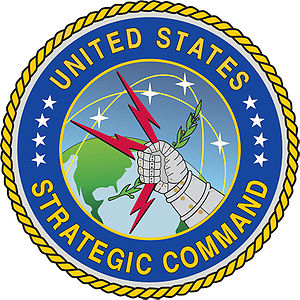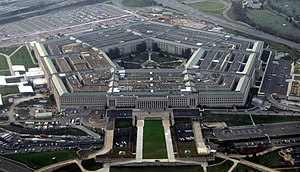Rick RozoffWorld's Sole Military Superpower's 2 Million-Troop, $1 Trillion WarsWith a census of slightly over 300 million in a world of almost seven billion people, the U.S. accounts for over 40 percent of officially acknowledged worldwide government military spending with a population that is only 4 percent of that of the earth's. A 10-1 disparity.
In addition to its 1,445,000 active duty service members, the Pentagon can and does call upon 1.2 million National Guard and other reserve components. As many as 30% of troops that have served in Afghanistan and Iraq are mobilized reservists. The Army National Guard has activated over 400,000 soldiers since the war in Afghanistan began and in March of 2009 approximately 125,000 National Guard and other reserve personnel were on active duty.
The Defense Department also has over 800,000 civilian employees at home and deployed worldwide. The Pentagon, then, has more than 3.5 million people at its immediate disposal excluding private military contractors.
After allotting over a trillion dollars for the wars in Afghanistan and Iraq alone and packing off more than two million of its citizens to the two nations, the U.S. military establishment and peace prize president have already laid the groundwork for yet more wars. Boeing, Raytheon and General Electric won't be kept waiting.
In his Nobel Peace Prize acceptance speech on December 10 the president of the United States appropriated for his country the title of "the world's sole military superpower" and for himself "the Commander-in-Chief of the military of a nation in the midst of two wars."
This may well have been the first time that an American - and of course any - head of state in history boasted of his nation being the only uncontested military power on the planet and unquestionably the only time a Nobel Peace Prize recipient identified himself as presiding over not only a war but two wars simultaneously.
As to the appropriateness of laying such claims in the venue and on the occasion he did - accepting the world's preeminent peace award before the Norwegian Nobel Committee - Barack Obama at least had the excuse of being perfectly accurate in his contentions.
He is in fact the commander-in-chief in charge of two major and several smaller wars and his nation is without doubt the first global military power which for decades has operated without constraints on five of six inhabited continents and has troops stationed in all six. United States armed forces personnel and weapons, including nuclear arms, are stationed at as many as 820 installations in scores of nations.
The U.S. has recently assigned thousands of troops to seven new bases in Bulgaria and Romania [1], deployed the first foreign troops to Israel in that nation's history to run an interceptor missile radar facility in the Negev Desert [2], and last week signed a status of forces agreement with Poland for Patriot missiles (to be followed by previously ship-based Aegis Standard Missile-3s interceptors) and U.S. soldiers to be stationed there. The troops will be the first foreign forces based in Poland since the dissolution of the Warsaw Pact in 1991.
The U.S., whose current military budget is at Cold War, which is to say at the highest of post-World War II, levels, also officially accounts for over 41% of international military spending according to the Stockholm International Peace Research Institute's report on 2008 figures: $607 billion of $1.464 trillion worldwide. On October 28 President Obama signed the 2010 National Defense Authorization Act with a price tag of $680 billion, including $130 billion for the wars in Afghanistan and Iraq.
That figure excludes military spending outside of the Department of Defense. The American government has for several decades been the standard-bearer in outsourcing to private sector contractors in every realm and the Pentagon is certainly no exception to the practice. According to some estimates, American military and military-related allotments in addition to the formal Pentagon budget can bring annual U.S. defense spending as high as $1.16 trillion, almost half of official expenditures for all of the world's 192 nations, including the U.S., last year.
With a census of slightly over 300 million in a world of almost seven billion people, the U.S. accounts for over 40 percent of officially acknowledged worldwide government military spending with a population that is only 4 percent of that of the earth's. A 10-1 disparity.
The U.S. also has the world's second largest standing army, over 1,445,000 men and women under arms according to estimates of earlier this year, second only to China with 2,255,000. China has a population of over 1.325 billion, more than four times that of America, and does not have a vast army of private contractors supplementing its armed forces. And of course unlike the U.S. it has no troops stationed abroad. India, with a population of 1.140 billion, has active duty troop strength smaller than that of the U.S. at 1,415,000.
The U.S. and Britain are possibly alone in the world in deploying reservists to war zones; this last February the chairman of the U.S. Joint Chiefs of Staff Admiral Michael Mullen acknowledged that 600,000 reserves have been called up to serve in the area of responsibility of the U.S. Central Command, in charge of the Afghan and Iraqi wars, since 2001. In addition to its 1,445,000 active duty service members, the Pentagon can and does call upon 1.2 million National Guard and other reserve components. As many as 30% of troops that have served in Afghanistan and Iraq are mobilized reservists. The Army National Guard has activated over 400,000 soldiers since the war in Afghanistan began and in March of 2009 approximately 125,000 National Guard and other reserve personnel were on active duty.
The Defense Department also has over 800,000 civilian employees at home and deployed worldwide. The Pentagon, then, has more than 3.5 million people at its immediate disposal excluding private military contractors.
In the last 48 hours two unprecedented thresholds have been crossed. On the morning of December 19 the U.S. Senate met in a rare Saturday morning session to approve a $636.3 billion military budget for next year. The vote was 88-10, as the earlier vote by the House of Representatives on December 16 was 395-34. In both cases the negative votes were not necessarily an indication of opposition to war spending but part of the labyrinthine American legislative practices of trade-offs, add-ons and deal-making on other, unrelated issues, what in the local vernacular are colorfully described as horse-trading and log-rolling among other choice terms. A no vote in the House or Senate, then, was not automatically a reflection of anti-war or even fiscally conservative sentiments.
The Pentagon appropriation included another $101 billion for the wars in Afghanistan and Iraq (Obama signed the last formal Iraq and Afghanistan War Supplemental Appropriations, worth $106 billion, in July), but did not include the first of several additional requests, what are termed emergency spending measures, for the Afghan war. The first such request is expected early next year, more than $30 billion for the additional 33,000 U.S. troops to be deployed to the war zone, which will increase the number of American forces there to over 100,000.
On the day of the Senate vote Bloomberg News cited the Congressional Research Service, which had tallied the numbers, in revealing that the funds apportioned for the wars in Afghanistan and Iraq have now pushed the total expenditure for both to over $1 trillion. "That includes $748 billion for spending related to the war in Iraq and $300 billion for Afghanistan, the research service said in a Sept. 28 report."
The new Pentagon spending plan "includes $2.5 billion to buy 10 additional Boeing Co. C-17 transports that weren't requested by the Pentagon. Chicago-based Boeing also would benefit from $1.5 billion for 18 F/A-E/F Super Hornet fighters, nine more than the administration requested."
Funding for military aircraft not even requested by the Defense Department and the White House or for larger numbers of them than were is another curious component of the American body politic. That arms merchants (and not only domestic ones) place their own orders with the American people's alleged representatives - the current Deputy Secretary of Defense, William Lynn, was senior vice president of Government Operations and Strategy for Raytheon Company prior to assuming his new post - is illustrated by the following excerpts from the same report:
"Defense Secretary Robert Gates recommended April 6 that the C-17 program be terminated once Boeing delivers the last of 205 C-17s in late 2010. Boeing, the second-largest defense contractor, has said its plant in Long Beach, California, will shut down in 2011 without more orders.
"The budget also includes $465 million for the backup engine of the F-35 Joint Strike Fighter. The engine is built by Fairfield, Connecticut-based General Electric Co. and London-based Rolls Royce Plc. The administration earlier threatened to veto the entire defense bill if it contained any money for the engine." [3]
The Pentagon and its chief Gates may win battles with the Congress and even the White House when they relate to the use of military force abroad, but against the weapons manufacturers and the congressmen whose election campaigns they contribute to the military brass will come off the losers.
In addition to the nearly two-thirds of a trillion dollar annual Pentagon war chest, the ongoing trillion dollar Broader Middle East war is a lucrative boon to the merchants of death and their political hangers-on.
On December 18 a story was posted on several American armed forces websites that U.S. soldiers have been sent to Afghanistan and Iraq 3.3 million times since the invasion of the first country in October of 2001. The report specifies that "more than 2 million men and women have shouldered those deployments, with 793,000 of them deploying more than once."
The break-down according to services is as follows:
More than 1 million troops from the Army.
Over 389,900 from the Air Force.
Over 367,900 from the Navy.
More than 251,800 Marines.
This past October alone 172,800 soldiers, 31,500 airmen, 30,000 sailors and 20,900 Marines were dispatched to the two war zones. [4]
The bulk of the U.S.'s permanent global warfighting force may be deployed to Afghanistan and Iraq, but enough troops are left over to man newly acquired bases in Eastern Europe, remain in Middle East nations other than Iraq, be based on and transit through the Manas Air Base in Kyrgyzstan, take over seven new military bases in Colombia, run regional operations out of America's first permanent base in Africa - Camp Lemonier in Djibouti, where 2,400 personnel are stationed - and engage in counterinsurgency campaigns in the Philippines, Mali, Uganda, Yemen and Pakistan.
Recently a U.S. armed forces newspaper reported in an article titled "AFRICOM could add Marine Air Ground Task Force" that "A 1,000-strong Marine combat task force capable of rapidly deploying to hot spots could soon be at the disposal of the new U.S. Africa Command."
The feature added that a Marine unit previously attached to the newly launched AFRICOM has "already deployed in support of training missions in Uganda and Mali," whose armies are fighting the Lord's Resistance Army and Tuareg rebels, respectively. [5]
In Yemen, Houthi rebel sources "accused the U.S. air force [on December 15] of joining attacks against them, and killing at least 120 people in a raid in the north of the poor Arab state."
Their information office said "The savage crime committed by the U.S. air force shows the real face of the United States." [6]
According to ABC News "On orders from President Barack Obama, the U.S. military launched cruise missiles early Thursday [December 17] against two suspected al-Qaeda sites in Yemen," [7] to complement mounting missile attacks in Pakistan.
The Houthi rebels are religiously Shi'ia, so any attempt at exploiting an al-Qaeda rationale for bombing their villages is a subterfuge.
At the same time the Commander of U.S. Air Forces in Europe and NATO Allied Air Component, General Roger Brady, fresh from a tour of inspection of the Caucasus nations of Azerbaijan and Georgia, was at the Adazi Training Base in Latvia to meet with the defense ministers of that nation, Estonia and Lithuania and plan "closer military cooperation in the security sector between the Baltic States and the USA which also included joint exercises in the Baltic region." [9] All five nations mentioned above - Azerbaijan, Estonia, Georgia, Latvia and Lithuania - border Russia.
During the same week's summit of the Bolivarian Alliance for the Peoples of Our America (ALBA) in Havana, Cuba, the host country's president Raul Castro said of the latest Pentagon buildup in Colombia that "The deployment of [U.S.] military bases in the region is...an act of aggression against Latin America and the Caribbean." [9]
Less than a week later the government of Colombia, the third largest recipient of American military aid in the world, announced it would construct a new military base near its border with Venezuela. "Defense Minister Gabriel Silva said [on December 18] that the base, located on the Guajira peninsula near the city of Nazaret, would have up to 1,000 troops. Two air battalions would also be activated at other border areas....Army Commander General Oscar Gonzalez meanwhile announced [the following day] that six air battalions were being activated, including two on the border with Venezuela." [10]
After allotting over a trillion dollars for the wars in Afghanistan and Iraq alone and packing off more than two million of its citizens to the two nations, the U.S. military establishment and peace prize president have already laid the groundwork for yet more wars. Boeing, Raytheon and General Electric won't be kept waiting.




